Body Condition Scoring of Horses: Practice Makes Perfect
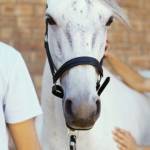
Body condition scoring (BCS) requires excellent observation and palpation skills. Though you are unable to touch the horses in these photographs, here’s your chance to pit your knowledge of BCS against the experts at Kentucky Equine Research (KER). A brief description of each horse is given with each photograph, and the expert opinions follow. For this exercise, use the nine-point BCS system developed in the U.S.
The Experts Weigh In
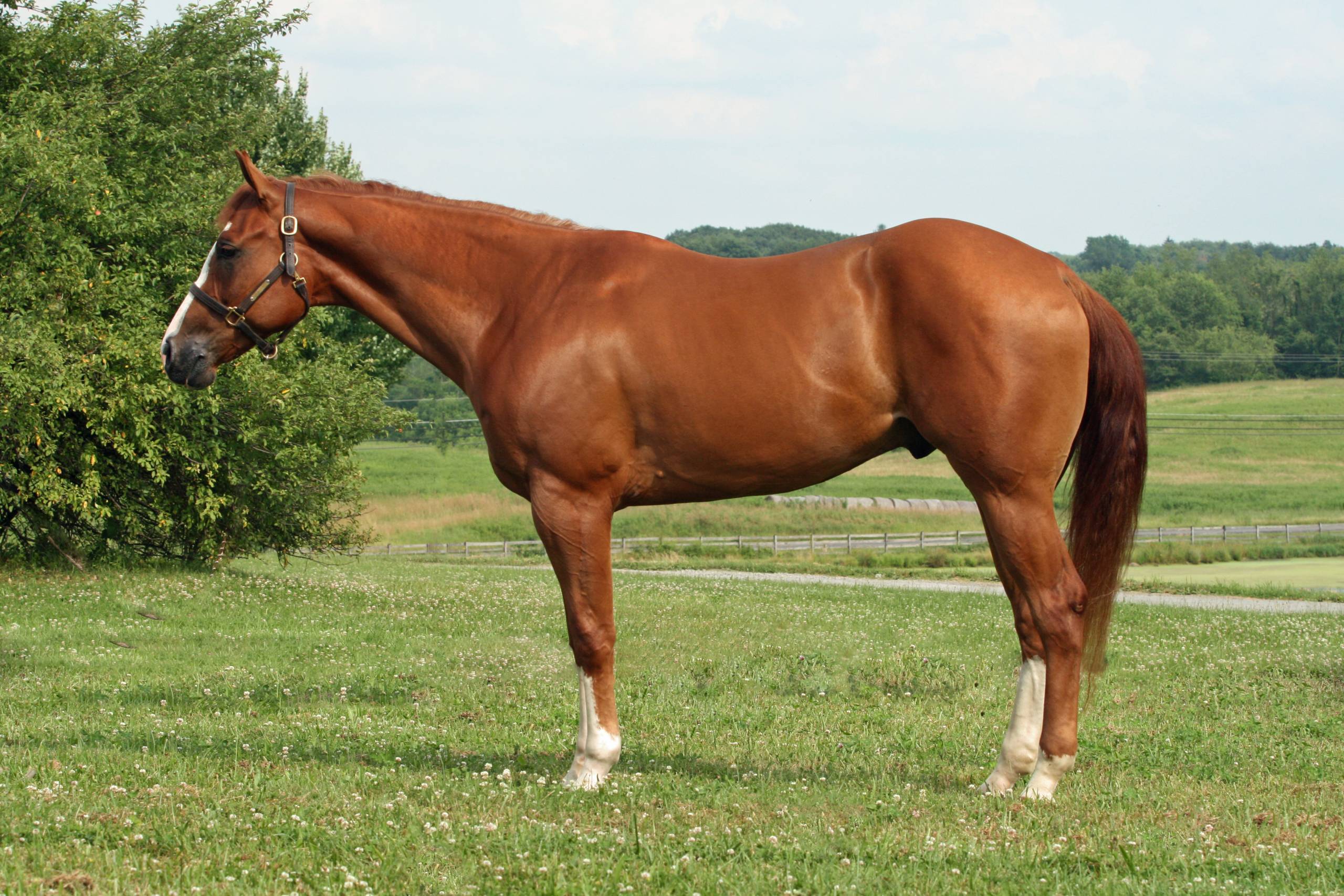
A. Three-year-old Quarter Horse gelding, 16 hands. This gelding is in moderate body condition, appropriate for his age and level of work, which was described as light. This is a smooth individual with even fat distribution that covers the ribs and rounds the croup. There is no evidence of excessive fat on the tailhead. His withers are flanked by fat but not overly so; and his neck ties in at the shoulder with acceptable definition. This gelding shows no evidence of an excessively fatty crest, and he is clean through the throatlatch. Coupled with his appropriate body condition, the gelding’s well-conditioned coat is testament to a suitable diet. BCS: 5
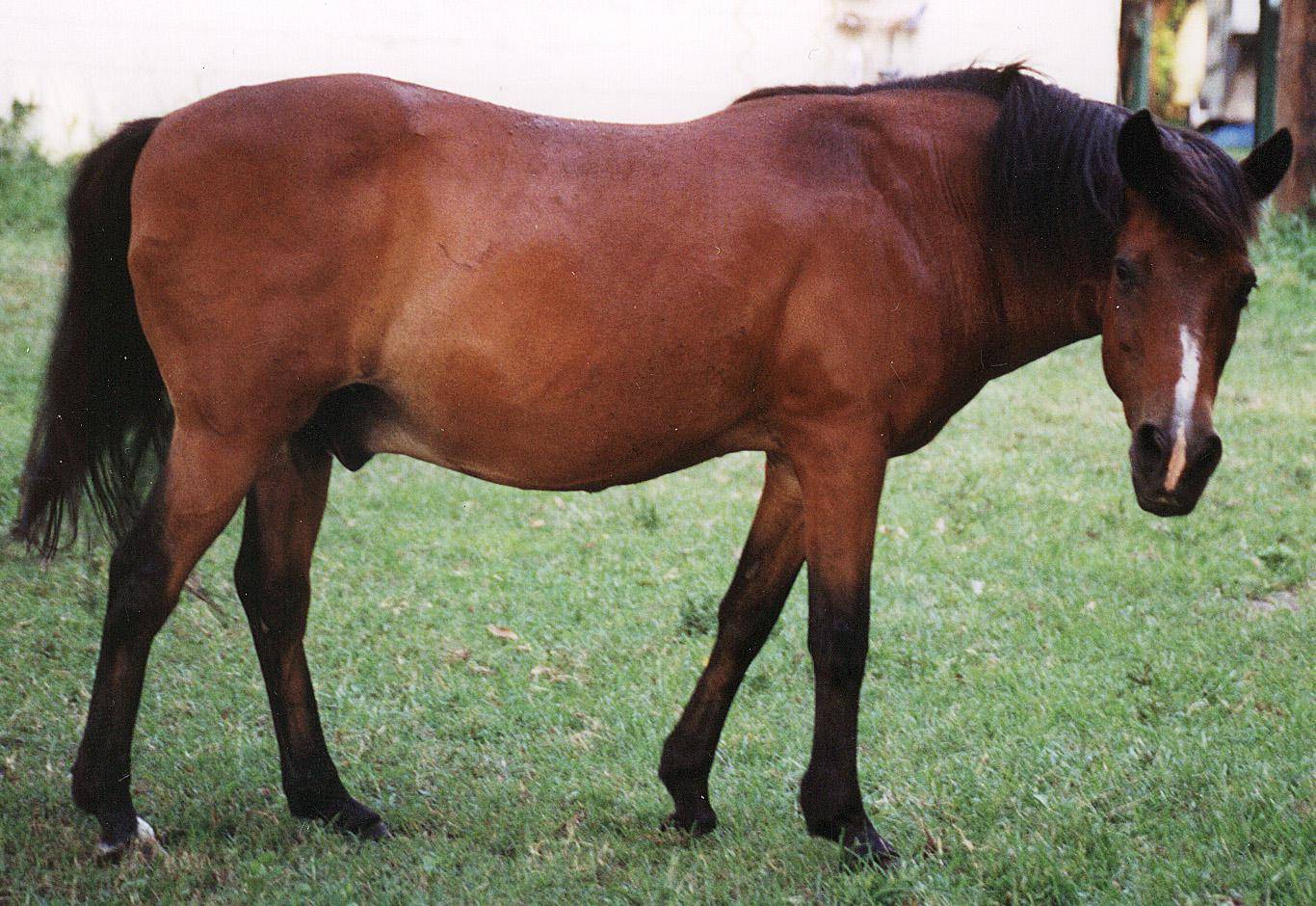
B. Thirty-year-old Welsh-cross gelding, 12.2 hands. The most striking evidence of extreme obesity is the amount of fat that thickens the entire length of the barrel and croup and the lumpy deposits bulging all over this gelding’s body. The tailhead completely disappears between fatty deposits, and his sheath is enlarged from fat accumulation. The topline can be likened to a tabletop, extremely wide and flat, and there’s likely a gulley that runs along the backbone. The crest of the neck is thick and heavy. He’s lived a long and useful life as a children’s mount, so whatever retirement granted him is just. Even in retirement, though, a close eye should be kept on body condition, and this gelding would benefit from gradual weight reduction. BCS: 9
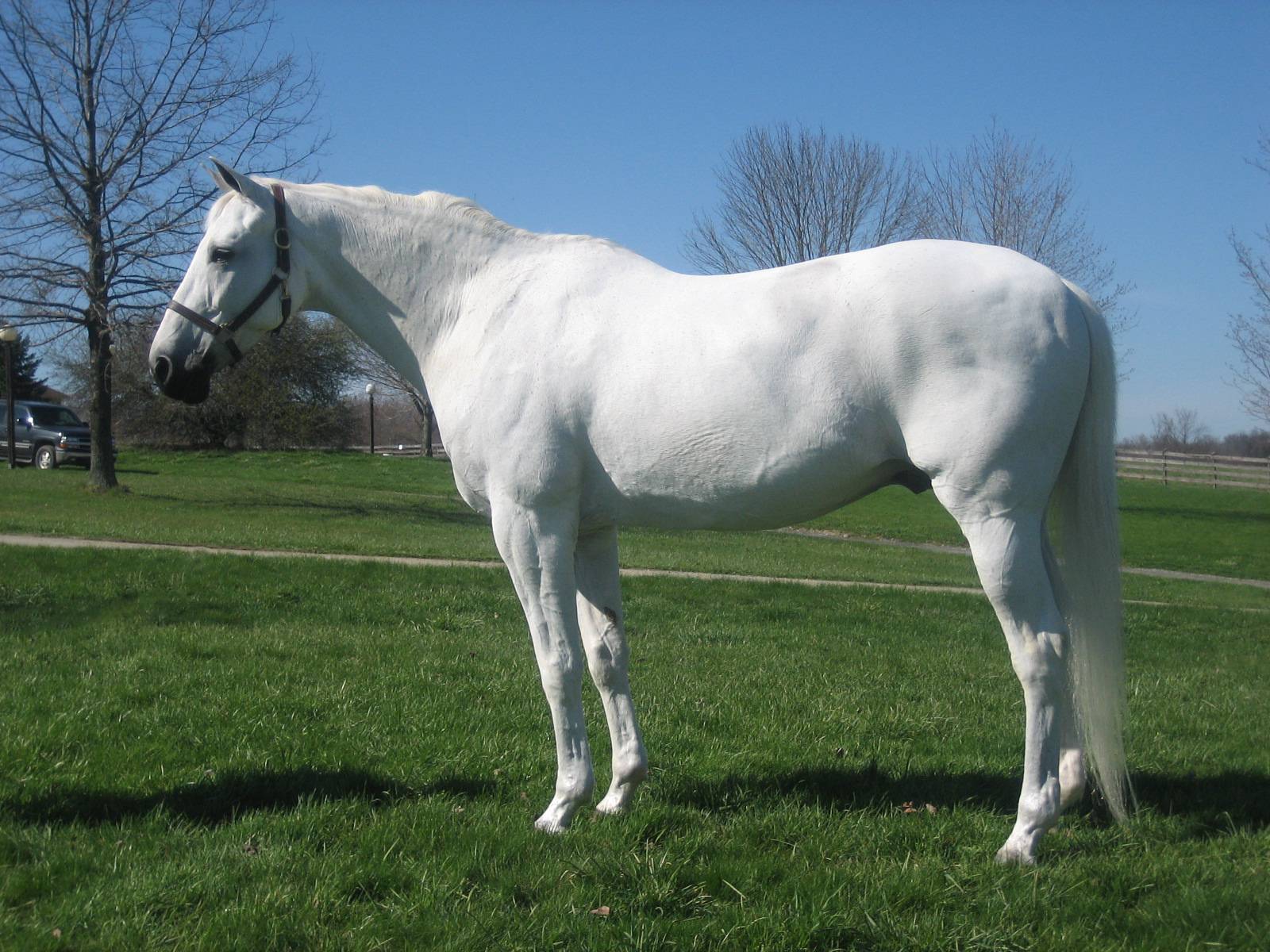
C. Sixteen-year-old Warmblood-cross gelding, 16.2 hands. This gray gelding is in beautiful condition for a middle-aged horse in light work. Keeping him this trim requires diligence, according to his owner, as he is an easy keeper that packs on condition quickly. He requires nothing more than limited grazing on high-quality pasture, mid-quality hay, and a balancer pellet. This horse carries a bit more condition than A, especially noticeable in the deeper barrel and flank as well as the tailhead. He has the beginning of a cresty neck and has lost some of the definition where the neck joins to the shoulder. He also has evidence of the fat pads behind the shoulder and on the hip. The owner should be mindful of his diet, allowing him to get no fatter, and should continue with at least 30 minutes of work almost every day, two key management tips that will keep metabolic problems at bay. BCS: 6

D. Two-year-old crossbred filly, 15 hands. This filly exhibits the effects of inadequate energy intake, muscle wasting, and parasitism. Her neck is pencil-thin and set roughly into a bony shoulder, her spinal column protrudes, and her hipbones are prominent. Though this photograph was taken in late spring when healthy horses in the same geographical area were shedding their winter coats, this filly was holding steadfastly to hers, another indication of extremely poor health. Notice the sunken areas near the withers and tailhead. A thoughtful refeeding program under the guidance of a nutritionist and in conjunction with a veterinarian is needed in instances like this. Though probably of different breeds, notice the difference in this young horse and the one featured in photograph A. BCS: 1
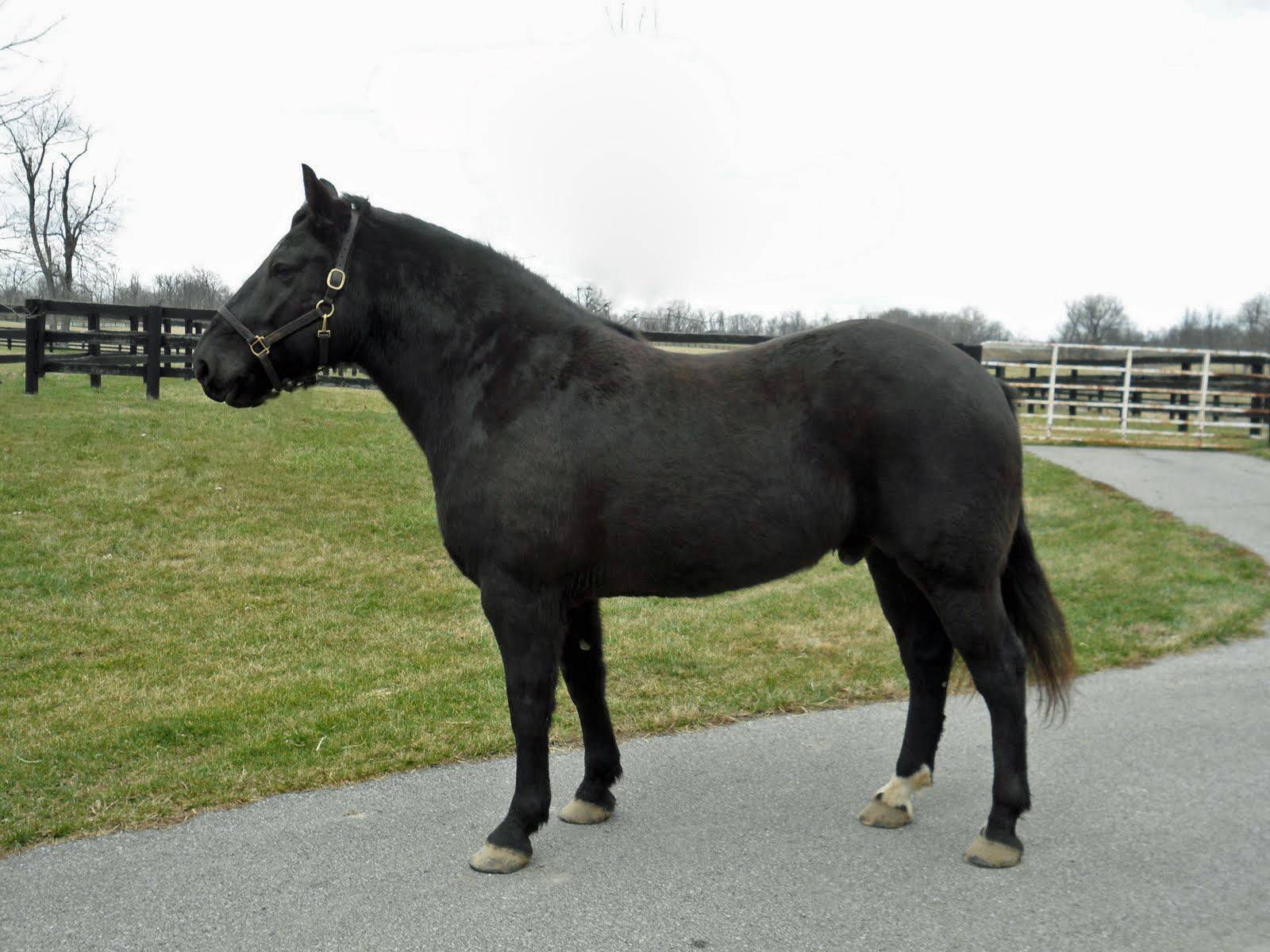
E. Five-year-old Percheron-cross gelding, 16 hands. This gelding’s breeding suggests ruggedness and power, but obesity is no more acceptable in drafts than their lightweight relatives. This gelding has even fat covering that appears to extend the length of the horse, from the throatlatch to the tailhead. The withers are rounded and presumably the back is wide and flat. The thick throatlatch, somewhat cresty neck, and lack of definition at the shoulder-neck tie-in all indicate overconditioning. Abundant fat lies behind the shoulder. Some of the roundness in this horse may be due to his draft heritage, as might the smooth manner in which he carries adipose tissue. Weight-reduction strategies should be implemented, using near-daily exercise and diet adjustments. BCS: 8
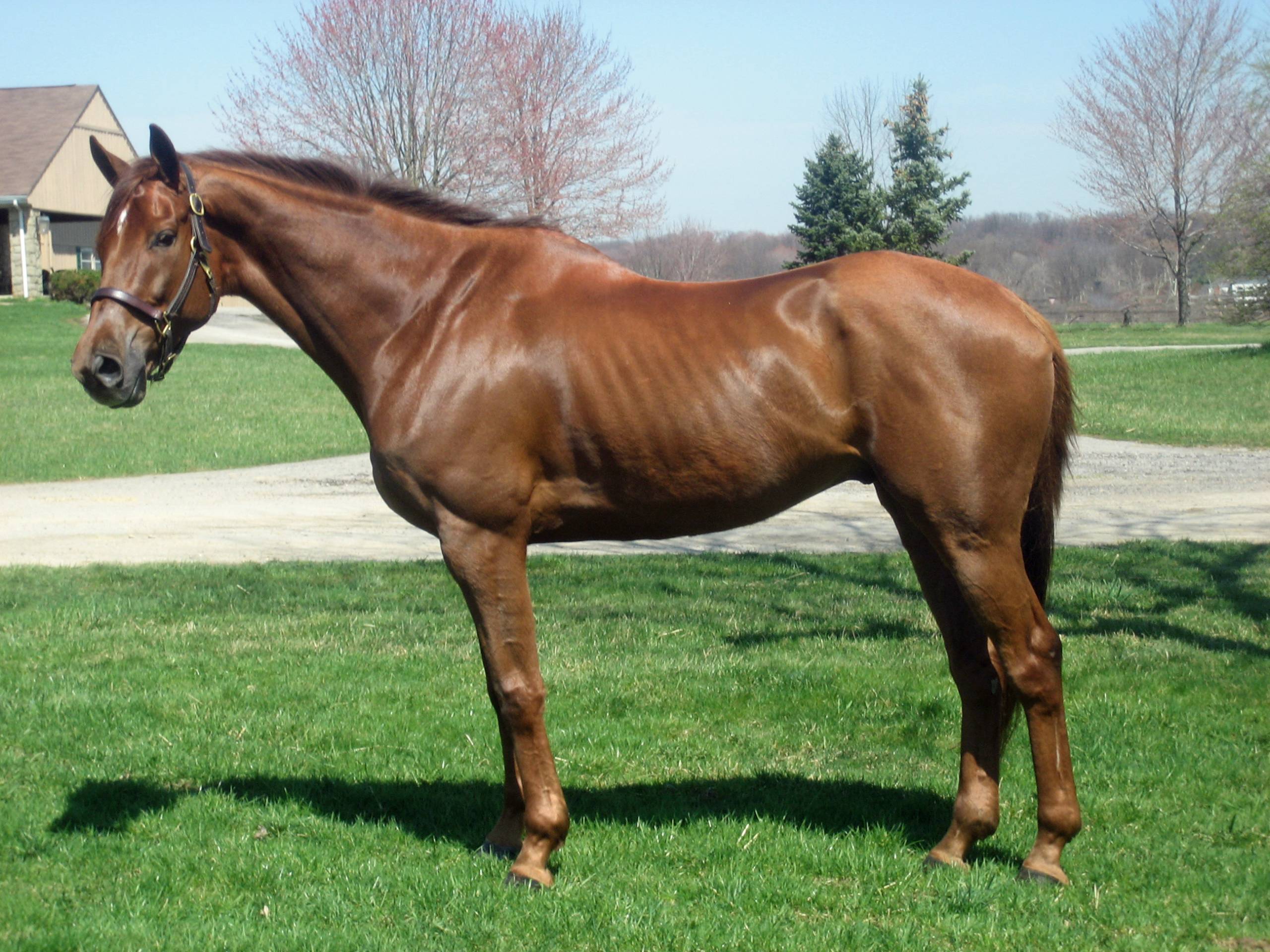
F. Seven-year-old Thoroughbred gelding, 16.2 hands. This gelding’s withers are mountainous, and they will probably always be, regardless of how much weight he gains. His ribs are easily identifiable. His neck ties in beautifully to his shoulder, the spinal column is not detectable in any way, and the hipbones are covered with a layer of fat. This gelding’s body condition improved over time, but progress was hindered frequently by the horse’s inappetence. After much trial and error, a diet was concocted that suited this nervous gelding. Among other things, his diet included mixed hay with generous portions of alfalfa (lucerne) and a high-fat, high-fiber feed. This gelding’s athleticism negates any frustration caused by his finicky appetite or saddle-fitting, which is complicated by those withers. BCS: 4








